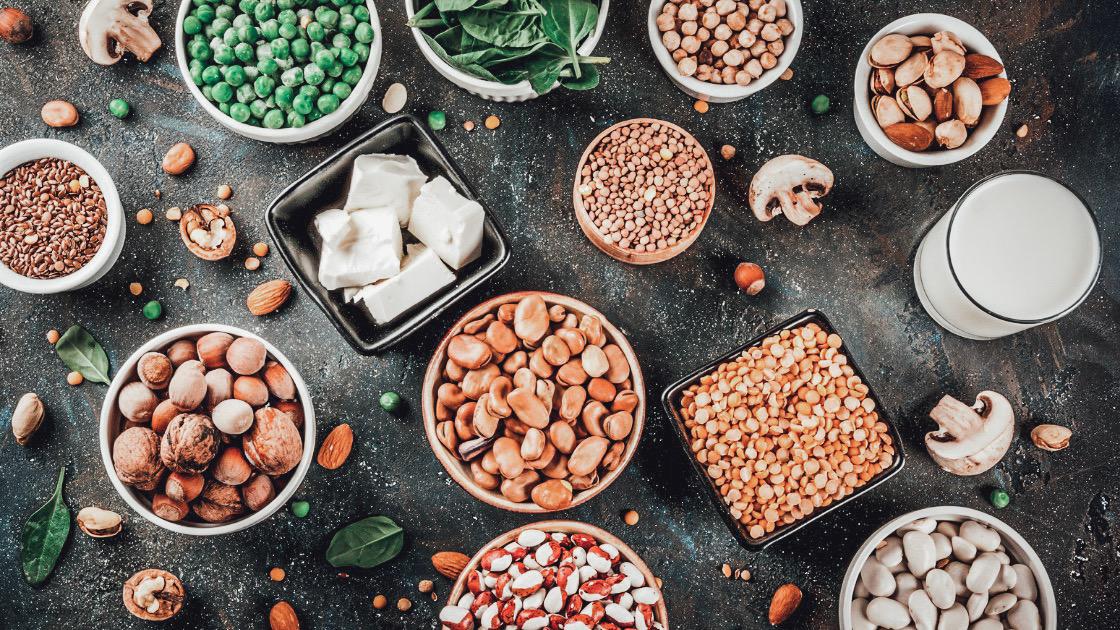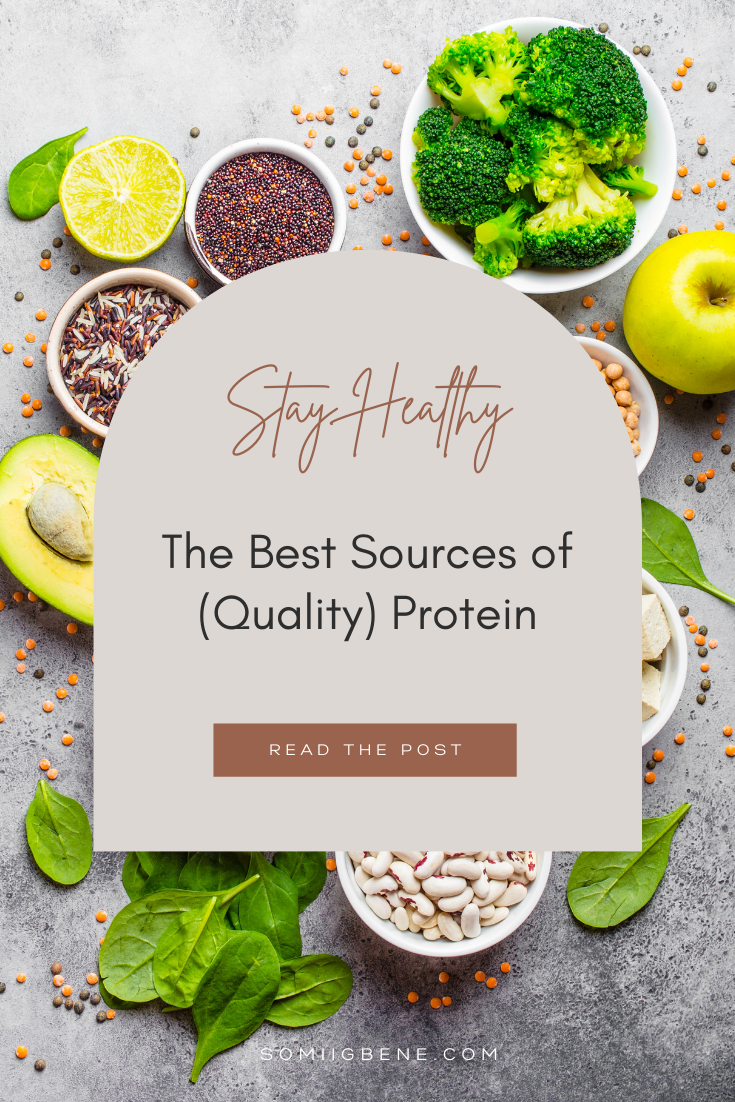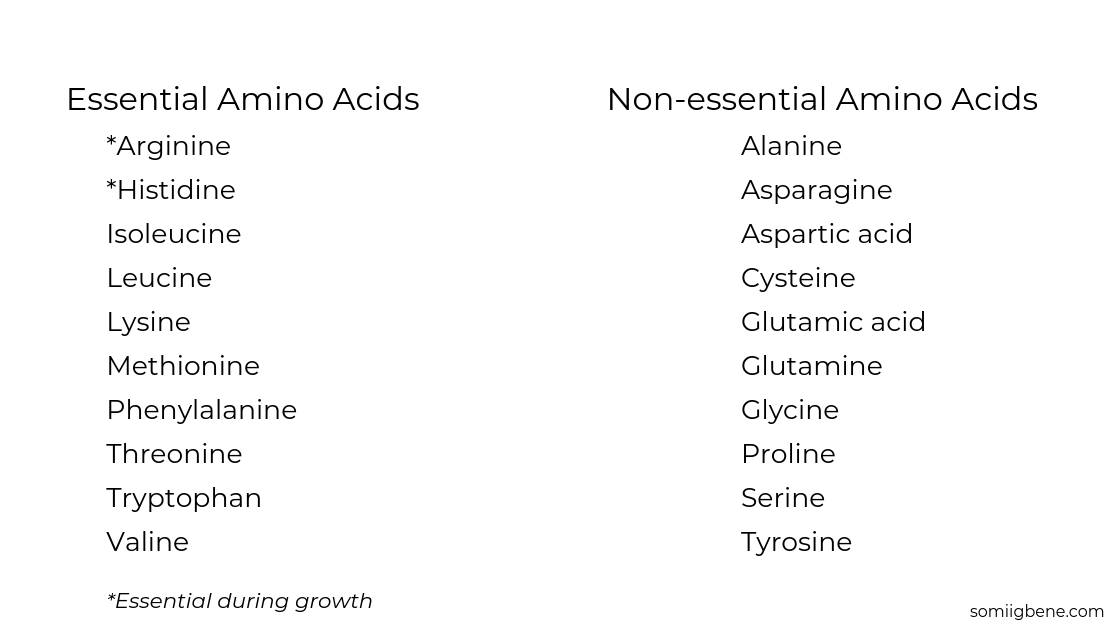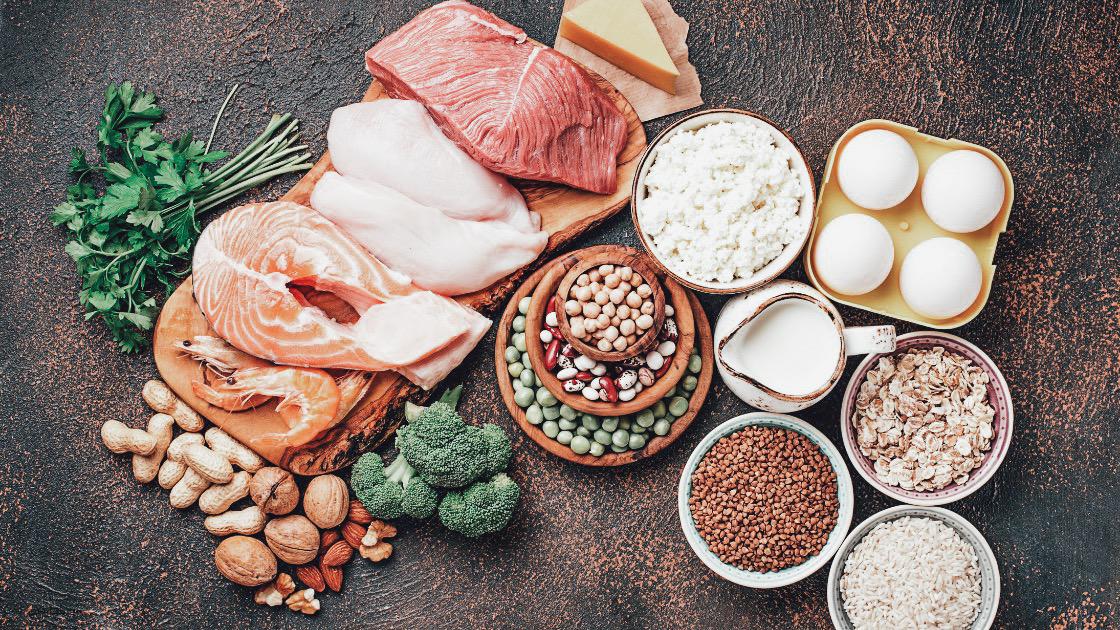
How much protein we need and the best sources of protein are controversial topics. This blog post addresses these topics and explores the healthiest way to include protein in your diet.
After water, protein is the most abundant component of your body. Your hair, muscles, nails, tendons and ligaments are made up of protein. Protein is also a key component of enzymes, hormones, neurotransmitters, antibodies and other immune cells.
Protein maintains body fluid balance, regulates the acid-base balance of blood and is a source of energy when your carbohydrate and fat intakes are low. Without enough protein in your diet, you run the risk of contracting infections or developing the wasting disease, marasmus.
There is still a lot of controversy surrounding how much protein we need and the best sources. One key point to remember is that you are an individual, and your protein needs may or may not be the same as the next person’s.
However, there are general guidelines you can adopt and then tweak to meet your requirements.
How Much Protein Do You Need?
The exact amount of protein you need depends on several factors including, your body weight, your activity levels, genetics, health status, environment and whether you’re pregnant or nursing.
The average, healthy, inactive adult needs around 0.8g of protein per kg of healthy body weight to maintain protein balance. A 57kg sedentary woman, for example, needs only 46kg of protein per day. Bear in mind that 0.8g/kg is the minimum amount you need to maintain nitrogen balance and not necessarily the ideal or optimal amount.
You easily achieve this by eating 5 to 6.5 ounces of protein daily. One ounce of protein is generally one ounce of meat, poultry, or fish; 1/4 cup of cooked beans or peas; 1 medium egg; 1 tablespoon of peanut butter; or 1/2 ounce of nuts or seeds. Examples of one ounce of protein include:
- 1 ounce of cooked lean beef, lean pork, or ham
- 1 ounce of cooked, skinless chicken or turkey
- 1 ounce cooked shellfish, salmon, herring, sea bass, mackerel or tuna
- 1 medium egg
- 1/2 ounce nuts (12 almonds, 24 pistachios, 7 walnut halves)
- 1/2 ounce seeds (pumpkin, sunflower, sesame, melon)
- 1 tablespoon nut butter (peanut, cashew, macadamia)
- 1/4 cup cooked beans (black, haricot, kidney, cannellini, borlotti, chickpeas)
- 1/4 cup cooked lentils (brown, red, green)
- 1/4 cup tofu
- 1 ounce cooked tempeh
- 2 tablespoons hummus
If you engage in high-intensity exercise or endurance/weight training, you may need up to 1.4g of protein per kg daily.
It is best to distribute protein equally across each meal instead of consuming most of it in one meal. Experts also advise aiming for 25-30g of protein at each meal to maintain healthy muscles and bones.

What are the best sources of protein?
Protein is present in all food groups, but most people only associate animal sources such as red meat, poultry, fish, and eggs with protein. All plant foods contain proteins, but legumes, nuts, and seeds contain the highest amounts. Grains and vegetables are also good sources.
Some foods are better sources of protein than others.
Why?
Because of how much essential and non-essential amino acids they contain. Let’s explore what essential and non-essential proteins are and what makes some protein better than others.
Essential amino acids vs Non-essential amino acids
You now know that amino acids are the building blocks of all proteins. Your body uses 20 different amino acids to function. It can make eleven of them; and these amino acids are known as non-essential amino acids.
However, there are nine amino acids that your body cannot make, which you must get from food. These nine amino acids are called essential amino acids. A deficiency in any of them negatively affects your tissue growth, its repair and maintenance.
Foods that contain all nine essential amino acids are referred to as complete proteins.
During periods of rapid growth in children, illness or stress, some of the non-essential amino acids can become essential. This usually occurs because the enzymes you need to make these non-essential amino acids are in short supply during periods of stress or illness.
Consequently, you should increase your protein intake during these periods.

Quality proteins
The quality of a protein is determined by (i) the amount of essential amino acid it contains, and (ii) how easily your body can digest and absorb it.
Animal proteins such as meat, poultry, fish, dairy and eggs are regarded as quality proteins because they contain sufficient amounts of all of the essential amino acids and because you can digest them better (~95% digestibility rate) than proteins found in most whole plant foods (~80-85% digestibility rate).
The nutritional quality of animal proteins is not all equal even though they are all highly digestible.
Whey protein is considered the highest quality protein, while eggs are the next best. In fact, some believe egg to be a nearly perfect food. Milk and fish are also better sources of protein than beef.
Soybeans and quinoa are the only quality plant proteins.
In most cases, plant foods must be combined (not necessarily at the same meal) to enable you to absorb sufficient quantities of essential amino acids. Legumes (pulses) and vegetables are typically deficient in the essential amino acid methionine, whereas nuts and grains are limited in lysine.
However, eating any combination of legumes and vegetables with grains and nuts, such as beans and rice, will provide all of the amino acids you need.

Animal Protein vs Plant Protein
While your body digests and absorbs animal protein better than plant protein, they aren’t necessarily always better.
Frequent consumption of animal protein is linked to certain cancers, hypertension and osteoporosis. Besides, animal protein contains higher levels of saturated fat, excessive intake of which is linked to cardiovascular disease.
However, not all animal proteins carry this risk.
Fish, for example, are generally lower in saturated fat and are good sources of essential omega-3 fats. They also provide heme-iron, cholecalciferol (vitamin D), docosahexaenoic acid (DHA), vitamin B12, creatine, taurine, carnosine and conjugated linoleic acid (CLA); all essential compounds that are generally absent in plant foods.
UV-treated mushrooms are a source of vitamin D.
While most plant foods aren’t quality protein sources, they are lower in saturated fat and lack cholesterol. They also contain phytochemicals including phytates, tannins and saponins that can reduce the risk of certain cancers.
Plant foods are the only source of fibre. Fibre is necessary for healthy digestion, and it plays a role in regulating blood cholesterol and glucose levels.
On the flip side, the beneficial phytochemicals (phytates) and fibre in plants can stop your body from absorbing vital minerals like zinc and calcium from your food when eaten in excess. And as mentioned, most plant proteins are incomplete or do not contain all the essential amino acids.
Legumes are limited in methionine and cysteine; grains in lysine and tryptophan, vegetables, nuts and seeds in methionine, cysteine, lysine and threonine, and seaweed in histidine and lysine.
Plant proteins are also not as digestible as animal proteins. And some studies show that you can utilise only a fraction of the plant proteins you consume.
How to eat protein in a health-promoting manner
We are all metabolically and biochemically unique.
The way your body processes and reacts to food is dependent on your genetics, environment, age, your current state of health and lifestyle factors. You may thrive by eating only plant proteins, eating only animal proteins or eating a combination.
For most people (and in the absence of any underlying conditions), a combination of animal and plant proteins, with a higher emphasis on plant proteins may be the best option. By eating a combination, you get the best of both worlds:
- fibre and beneficial phytochemicals from plants
- highly digestible and absorbable proteins from animal foods
- B12, heme iron, and other essential proteins generally lacking in plant foods and,
- an overall diet that is low in cholesterol and saturated fat, due to higher consumption of plant foods
Here are seven tips to eat protein healthily
1 | Eat a variety of fish instead of meat and poultry at least twice a week. Choose oily fish, such as sea bass, mackerel, salmon, herring, trout, anchovies and sardines. These fish are rich in anti-inflammatory omega-3 and vitamin D.
2 | When eating meat and poultry, go lean. Always remove the skin and trim visible fat from meat and poultry.
3 | Avoid frying, broil, grill, roast or stew meat, poultry and fish. And instead of coating them in high-fat sauces for flavour, use dried or fresh herbs and spices.
4 | Build the majority of your meals around beans, peas, lentils and soy foods like tofu and tempeh. They are rich sources of fibre, cholesterol-free and low in saturated fat. If you need to eat fewer carbohydrates due to type 2 diabetes, monitor your intake of beans, peas and lentils.
5 | Include nuts and seeds among your protein choices. Nuts and seeds are great sources of minerals like zinc and selenium, vitamin E and heart-healthy monounsaturated fats. Because they are a dense calorie source, be careful with your portion sizes. Aim for 1/2 ounce per serving.
6 | Enjoy eggs for lunch and dinner and not just breakfast. Eggs are a budget-friendly source of quality protein, vitamin D and choline. If you have high cholesterol or a family history of cardiovascular disease, limit your egg intake to six per week, otherwise, eat them liberally.
7 | Limit your intake of processed meats like ham, salami, sausage, and hot dogs, which are typically high in nitrates (linked to cancer) and sodium.
So, now you know the best sources of protein, what a quality protein is and how to include protein in a health-promoting manner.
Remember, you are unique and it is best to feed your body the foods it needs to thrive. Cutting out food groups without underlying conditions, allergies or intolerances is not always the best option.
A combination of plant and animal proteins, with an emphasis on plant proteins, is likely optimal for you.
References
- Lonnie M, et al. (2018) Protein for Life: Review of Optimal Protein Intake, Sustainable Dietary Sources and the Effect on Appetite in Ageing Adults. Nutrients. 10(3): 360 doi: 10.3390/nu10030360
- Wu G (2016) Dietary Protein Intake and Human Health. Food & Function (7): 1251
- Elmadfa I, Meyer aL (2017) Animal Proteins as Important Contributors to a Healthy Human Diet. Ann Rev Anim Biosci 8(5): 111-131
- Richter CK, et al. (2015) Plant Protein and Animal Proteins: Do They Differentially Affect Cardiovascular Disease Risk?. Advances in Nutrition. 6(6): 712-728
- Gilani GS, et al. (2012) Impact of Antinutritional Factors in Food Proteins on the Digestibility of Protein and the Bioavailability of Amino Acids and on Protein Quality. British Journal of Nutrition 108: S315-S332
- Hoffmann JR and Flavo MJ (2004) Protein – Which is Best? Journal of Sports Science and Medicine 3: 118-130
- Woolf PJ, et al. (2011) vProtein: Identifying Optimal Amino Acid Complements from Plant-Based Foods. PLOS One 6(4): e18836


The Comments
Sumit Singh
Protein is one of the essential nutrients for the body. It is responsible for muscle building. Even if there are various protein sources, one must decide their diet based on their body. 25g – 30g of protein per meal is a decent number. Along with consumption, exercise is also essential. Thank you very much for this article.
Amit Sahu
Thank you Somi for the detailed article. Its very informative and packed with lots of knowledge bombs.
Somi Igbene PhD ANutr
> Amit SahuYou’re welcome! I’m glad you found it useful 🙂